Though you regularly clean your toilet, you notice purple or pink stains on the toilet seat after using it. Isn’t it irritating, and don’t you know why this discoloration appears?
Relax, you aren’t alone in this group. Every day a large group of people faces this unpleasant situation.
To get rid of the stains, you have to know the reason and how to remove these purple stains on the toilet seat.
Here, we’ll discuss the reasons for these stains and how to remove them with homemade solutions and commercial cleaners. At the end of our discussion, we’ll share some valuable tips to stop these nasty stains from coming back. So keep with us till the end.
Why Does Your Toilet Seat Turn Purple?
| Reason | Explanation |
|---|---|
| Chemical Reaction | Exposure to certain cleaning chemicals containing bleach or ammonia can cause toilet seats to turn purple due to a chemical reaction with the plastic or finish. |
| Bacterial Growth | Purple or pink stains on toilet seats can be a result of bacteria like Serratia marcescens thriving in moist environments, often found in bathrooms. |
| Mineral Deposits | Hard water with a high mineral content can leave behind mineral deposits, which may appear purple or pink when they accumulate on the toilet seat. |
| Dyes or Fabric Transfer | If you have clothing or fabrics that frequently come into contact with the toilet seat, dyes from these materials can transfer and cause discoloration. |
| Age and Wear | Over time, older toilet seat materials or finishes may naturally discolor or change color due to wear and exposure to bathroom conditions. |
One of our articles –Period Blood Under Toilet Seat.
There are no fixed or specific reasons for this discoloration. Let’s see some common reasons for these stains so that you can easily identify why your toilet seat turns purple.
- Usually, you use toilet cleaning detergent to clean it, and if you don’t properly clean the detergent residue, it causes purple marks on toilet seat.
- During pregnancy, the levels of hormones increase. When a woman uses the toilet, such purple stains might appear after a while. The reason is the coating of the toilet seat.
- Airborne bacteria or Serratia Marcescens (the name of a specific bacteria) grows in a moist area. In the washroom, it attacks almost every surface. These airborne bacteria enter the bathroom through a person who uses the washroom after being out all day.
Basically, the bacteria feed on mineral and iron deposits of water and soap or shampoo residue in the bathroom. As the days go by, this purple mold becomes deeper as it mixes with the urine and feces stains. And then it seems more disgusting.
How To Get Rid Of The Purple Stains From The Toilet Seat?

It’s time to get rid of these purple stains on the toilet seat. Yes, we will try to offer you some solutions that don’t cost you. So first, we’ll share some homemade solutions to save your buck. If you can remove the stains with these remedies, you don’t need to buy commercial-grade cleaners.
Method 1 – Using Homemade Solutions

You should proceed step by step when you use homemade solutions to effectively clean the toilet. Let’s go through.
Step 1: Taking preparation
Prepare yourself by getting all the necessary tools to remove this mold before starting cleaning.
The things you need
- Rubber Gloves.
- Mask.
- Spray Bottle.
- Scrubbing Pad / Sponge / Cleaning Brush.
- Vinegar/bleach/dish soap and baking soda.
Step 2: Make The Solution And Apply
First, wear hand gloves and a mask to protect yourself from contamination. Making a solution is first to kill the bacteria and then remove the stains. It’s so easy to make such a disinfectant cleaning solution. There are several types of solutions you can make. Such as –
For Vinegar Solution

- Take 1 cup white vinegar + ½ cup baking soda + ½ teaspoon essential oil.
- Mix all of them properly to make a powerful disinfectant solution and fill it in a spray bottle.
- Spray it on the affected surface of your toilet seat and wait for 2 minutes.
- Gently scrub the surface with an old toothbrush/scrubbing pad.
- Clean the loosened stains with warm and soft water.
- Finally, wipe the surface with a dry cloth or sponge. You may use Lysol Disinfectant Wipes as well. (If you already have it)
In addition, this solution is also effective in cleaning the urine stain on the toilet seat. So if your toilet has these stains, don’t forget to use them.
For Bleaching Solution-
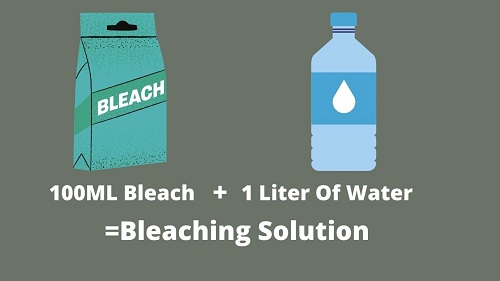
- Mix bleach and water in a 1:10 ratio. That means with 1 liter of water, add 100ml bleach.
- Fill the solution in a spray bottle and apply it to the surface.
- After waiting 1-2 minutes, gently scrub the stained area with a toilet cleaner pad or a sponge.
- Complete your task by cleaning the surface with soft water and wiping it down.
If your toilet has porcelain surfaces, a mild solution is preferable not to cause discoloration. So you may also use a soft bleaching solution by adding more water.
For Dish Soap Solution-
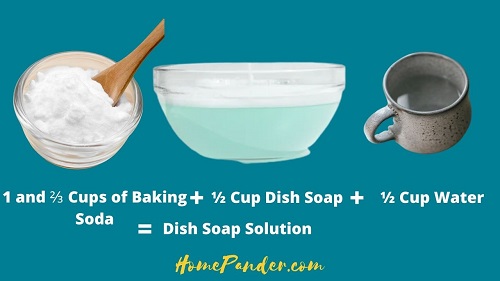
- Take 1 and ⅔ cups of baking soda + 1/2 cup of dish soap + 1/2 cup of water.
- Mix properly with a spoon and pour it into a spray bottle.
- Shake thoroughly and apply on the ringspot.
- Scrub appropriately with an old toothbrush or scrubbing pad.
- Rinse with water and wipe down.
For Lemon juice Solution-
Squeeze fresh lemon juice onto the stains and let it sit for a few minutes before scrubbing.
For Baking soda Solution-
Make a paste using baking soda and water, then scrub the stains with it.
For Magic eraser Solution-
Use a magic eraser sponge to gently scrub away the stains.
For Toothpaste Solution-
Apply toothpaste to the stains and let it sit for a few minutes before scrubbing.
For Ammonia Solution-
Mix ammonia with water and use it to clean the purple stains on the toilet seat.
For Rubbing alcohol Solution-
Dampen a cloth with rubbing alcohol and wipe the stains until they disappear.
These solutions also effectively clean the poop stains from the toilet seat.
Method 2 – Commercial Cleaning Product

Have no time to make a cleaning solution? There are enough commercial cleaning products to make your home cleaning task easy and swift. Here are our best recommendations that you may use to get rid of the bacterial pink or purple stains from the toilet seat.
From Lysol, there are Lysol Bathroom Cleaners and Lysol Multi-Purpose Cleaners for cleaning and disinfecting your toilet seat. They also have Lysol Disinfectant Wipes for cleaning up. You can choose any one from the list based on your requirements, especially for Lysol toilet bowl cleaner, which turns purple.
From Clorox, there are Clorox Disinfectant Bleach and other bathroom cleaners. They also have Clorox Disinfectant Wipes for soaking the surface. If you can’t collect Lysol cleaners, you can choose any cleaner from Clorox.
Moreover, these commercial cleaners are adequate to clean black, red, orange, blue, and purple stains from the toilet seat. You may use them either alone or by mixing them up with water.
No matter which cleaner you choose, both use processes are almost the same. Here we describe a straightforward step-by-step process. But we’ll also suggest you read the cleaner’s label to follow the process more effectively.
Step 1: Apply the solution
What cleaner you have, apply it to the stains and wait a few minutes. Apply more cleaners on the deepest space and less cleaner on light stain space. Otherwise, the cleaner’s chemical may damage your toilet color permanently.
Step 2: Scrubbing and cleaning
When the cleaner loosens the stains, start gently scrubbing the affected space with a soft bristle brush, microfiber cloth, or toilet sponge. After scrubbing, clean the cleaner’s residue and stain’s dirt with clean water.
Step 3: Wiping
Lastly, wipe the entire toilet surface, including walls, toilet bowl, seat, and basin with a dry cloth. Because when you clean the purple stains, the water will spread all over the toilet.
Tips Not To Cause The Purple Stains On The Toilet Seat
- Soften Water System
Hard water contains so many minerals, which help bacteria grow. In that case, you need to soften the water used in the bathroom. In that case, you may install a Faucet Water Filter System instead of the regular water tap.
- Ventilation System
Bathroom surfaces are ideal for viruses and bacteria for moisture. So, it is essential to set up a ventilation mechanism in the washroom. You may install an exhaust fan in your bathroom.
If you don’t have an exhaust fan, keep the ventilation window open. Moreover, keep the door open for a while after using the washroom.
- Dry Surface
After cleaning the toilet seat, don’t forget to dry it. Here, you may wipe it with a dry cloth or any disinfectant wipes.
Related Questions
[faq-schema id=”9070″]
Check this post to learn how to Remove Blue stains from Toilet seats.
Conclusion
Now you know how to get rid of the purple stains on the toilet seat. Follow all the steps accordingly to get the maximum results. Moreover, regular maintenance will help you not to cause such an issue further.
So, why are you waiting? Go, disinfect and clean your toilet seat. Don’t forget to share your thoughts and experience with us by hitting our comment section. We’ll love to know about your experience.




![How to Remove Crystallized Urine [Explained]](https://homepander.com/wp-content/uploads/2022/02/How-To-Remove-Crystallized-Urine.jpg)

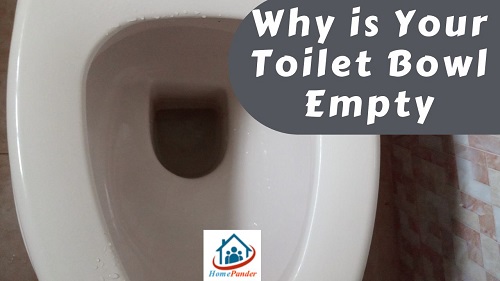


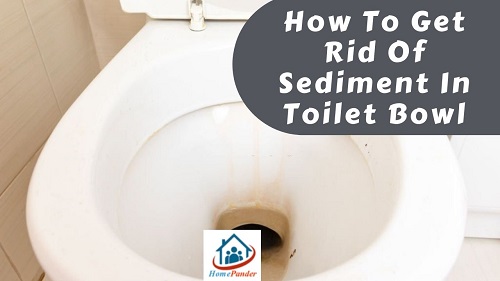
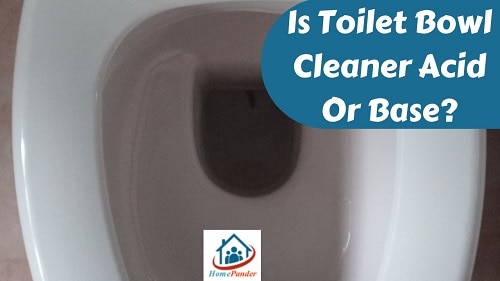
![How To Clean Dark Grout That Has Turned White [5 Easy Ways]](https://homepander.com/wp-content/uploads/2021/12/How-To-Clean-Dark-Grout-That-Has-Turned-White.webp)